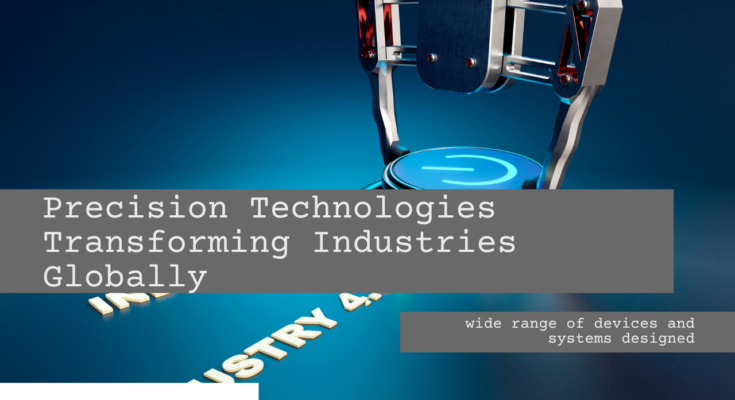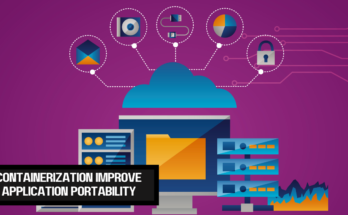Precision Technologies in Action: Transforming Industries Globally
In the rapidly advancing landscape of technology, precision technologies have emerged as key contributors to the remarkable progress unfolding across diverse industries. These advancements encompass the utilization of advanced devices and frameworks, enabling accurate measurements, controls, and processes. This leads to increased efficiency, reduced waste, and enhanced overall performance. In sectors such as manufacturing, healthcare, and agriculture, the integration of precision technologies is transforming problem-solving approaches and task execution. This article explores the significance of precision technologies, their practical applications, and the transformative influence they exert on diverse industries.
Precision Technologies Defined:
Precision technologies comprise a wide range of devices and systems designed to perform tasks with unprecedented degrees of accuracy and control. These technologies use advanced sensors, actuators, robots, artificial intelligence, and data analytics to produce precise measurements and actions.. Reducing mistakes and variability is the aim, which will eventually raise process quality and dependability.
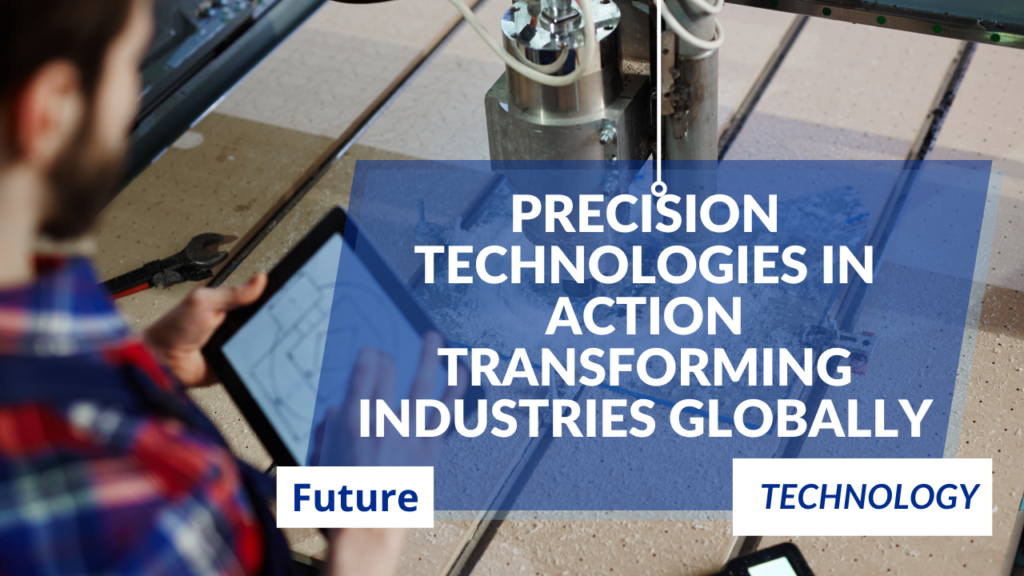
Applications in Manufacturing:
- The manufacturing sector benefits greatly from precision technologies, with the aerospace, automotive, and electronics sectors being the most impacted. In these domains, precision is paramount and necessitates the utilization of cutting-edge tools and technologies to achieve unparalleled accuracy in production procedures.
- Cutting-edge machining tools are revolutionizing precision production. Manufacturers can use technologies like computer numerical control (CNC) systems to attain micron-level accuracy while producing complicated components. This level of precision greatly reduces waste and production costs while also enhancing the quality of the final product.
- The use of robotics in production processes emphasizes the significance of precision technology even more. Complex components can be created with unmatched accuracy thanks to automated systems that are controlled by complex algorithms and well-written code. This guarantees consistency in quality and speeds up manufacturing processes, satisfying the strict requirements of industries where accuracy is essential.
- Smart factories are a revolutionary idea that resulted from the combination of production and precise technology. These cutting-edge manufacturing settings are characterized by linked systems that interact in real time, coordinating a symphony of production processes. The optimization of production schedules and resource usage is achieved through interconnection, leading to increased operational efficiency.
- Another amazing application of precise technologies in manufacturing is predictive maintenance. Predictive maintenance systems, made possible by a network of sensors and sophisticated data analytics, foresee any problems with machinery before they arise. Because of this foresight, periodic maintenance interventions are possible, reducing downtime and averting unplanned breakdowns. Manufacturers can increase the operating lifespan of their machines and streamline production processes by proactively attending to maintenance needs.
| Industries | Applications |
|---|---|
| Agriculture | Precision planting, variable-rate fertilization, crop monitoring, yield mapping, livestock tracking, water management |
| Manufacturing | Quality control, assembly line automation, process optimization, predictive maintenance, robotics, 3D printing |
| Healthcare | Diagnostics, imaging, surgery, drug delivery, patient monitoring, telemedicine, prosthetics |
| Construction | Surveying, building information modeling (BIM), machine control, quality assurance, safety inspection |
| Transportation | Self-driving cars, traffic management, logistics optimization, fleet tracking, infrastructure inspection |
| Environmental Monitoring | Air and water quality monitoring, pollution tracking, climate change research, natural resource management |
| Military | Weapon guidance, target acquisition, surveillance, reconnaissance, navigation |
| Aerospace | Satellite navigation, aircraft control, flight simulation, space exploration |
| Consumer Electronics | Smart devices, wearables, virtual/augmented reality, gaming, biometric security |
| Retail | Inventory management, customer tracking, personalized marketing, supply chain optimization |
| Finance | Fraud detection, risk assessment, algorithmic trading, financial modeling |
| Education | Personalized learning, adaptive testing, virtual labs, simulations, educational games |
Healthcare Advancements:
Precision technology integration has completely changed the healthcare sector, having a significant impact on treatment strategies, diagnosis, and patient care in general. This paradigm shift is particularly evident in the use of cutting-edge techniques and tools that prioritize accuracy and individualized care.
Medical imaging systems like CT and MRI are leading the way in this transition. Modern imaging modalities outperform older methods by providing accurate and comprehensive images that are required for a precise diagnosis. Because MRI and CT scans produce high-resolution images, medical practitioners can discover and evaluate medical conditions with remarkable precision, enabling them to make better informed treatment decisions.
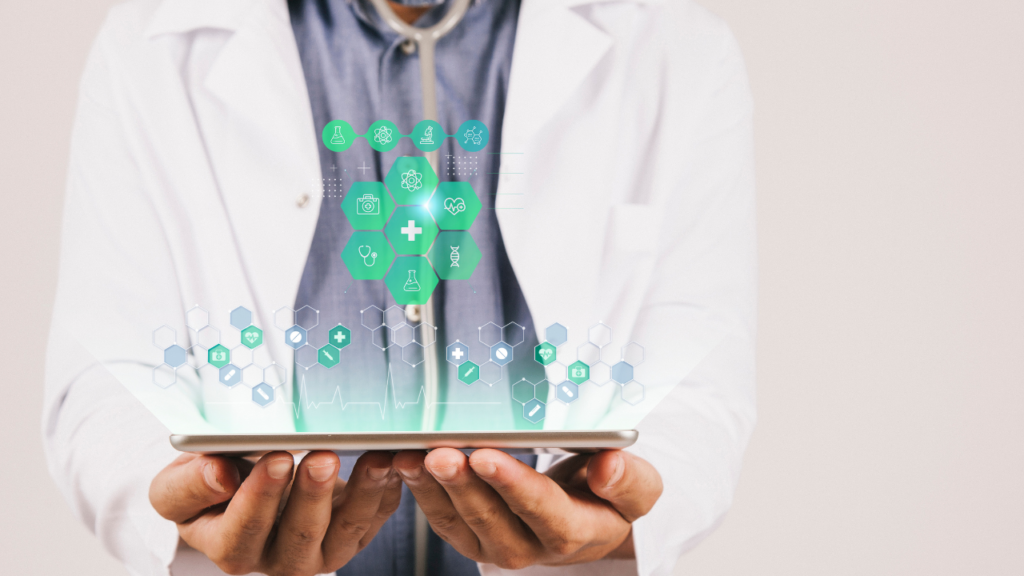
Thanks to incredible developments in genetics and molecular biology, precision medicine is another significant improvement in healthcare. This innovative approach tailors medical therapies to the distinct genetic profiles of individual patients. By examining a patient’s genetic composition, medical experts can identify targeted treatments that have a higher chance of being helpful, hence enhancing treatment outcomes and minimizing side effects. Precision medicine represents a shift in healthcare delivery from a generic approach to one that is highly tailored and effective.
One well-known example of how precision technology is enhancing surgical interventions in medicine is robotic surgery. Surgeons may now perform minimally invasive procedures with unparalleled control and precision thanks to robotic technology. Patients recover from surgery more quickly and with less pain because to this technological synergy that makes it possible to do more intricate and complicated procedures with less invasiveness.
Furthermore, wearable technologies and sensors are now crucial components of continuous patient monitoring, which helps to uphold the individualized healthcare paradigm. These devices allow for the real-time tracking of vital signs, providing medical professionals with crucial patient health information. Continuous observation facilitates early detection of potential issues, allowing for timely interventions and customized adjustments to treatment plans. Patients gain from a proactive, customized approach to healthcare, which also supports a more comprehensive, patient-centered medical management plan.
Agriculture and Precision Farming:
Precision technology and farming practices have revolutionized the agriculture sector, bringing in a new era of sustainability and efficiency. This ground-breaking technique gives farmers the ability to precisely control and optimize agricultural yields and resource efficiency by utilizing state-of-the-art technologies like as sensors, drones, and GPS-guided tractors.
Farming has been transformed by the use of GPS-guided tractors, which provide farmers with an automated and precise method of managing their crops. Precise field navigation is made possible by these tractors, ensuring that planting, fertilizing, and harvesting procedures are completed with the utmost accuracy. This reduces the chance of human error while also maximizing the efficiency of farming operations.
Drones have become essential tools in precision agriculture because they offer an aerial view of the entire field. High-definition images captured by drones equipped with advanced imaging technology can provide farmers with immediate insights on a variety of agricultural problems, including crop health, pest infestations, and soil conditions. With access to a multitude of data, farmers may make data-driven decisions and optimize their farming practices.
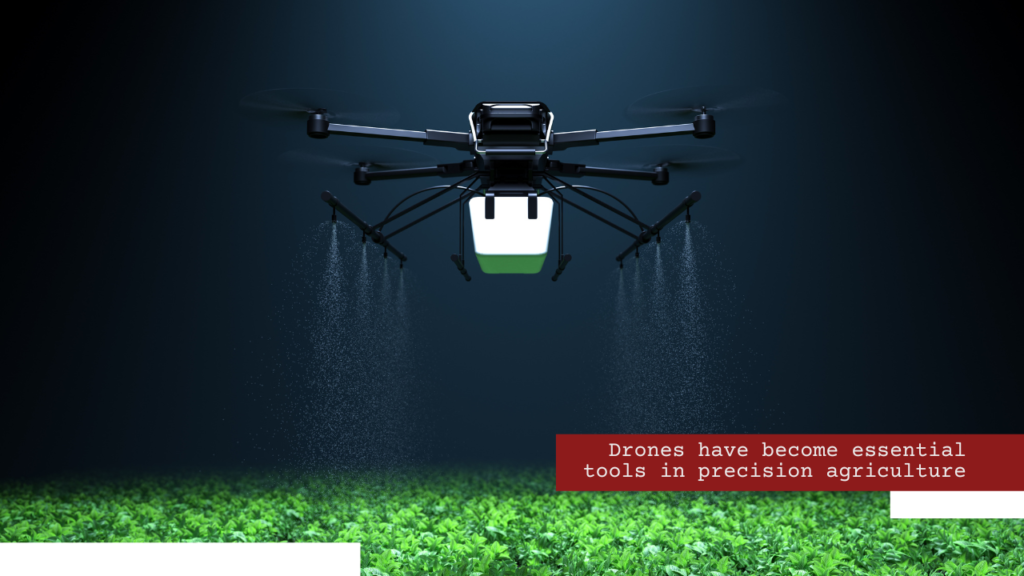
Precision farming relies heavily on sensors since they collect real-time data on a wide range of factors that are critical to crop health. These sensors monitor soil moisture, temperature, and nutrient content to provide farmers with a complete view of the conditions in their fields. Based on timely input, farmers can make the necessary modifications to their irrigation and fertilization systems to ensure that crops receive the right amount of water and nutrients for growth.
The use of automated irrigation systems is one of precision agriculture’s most notable aspects. These systems’ integration of sensors enables precise and focused irrigation based on the particular needs of each crop. Because automated irrigation distributes the right amount of water at the right time, it conserves resources, reduces waste, and improves overall water use efficiency. This not only helps farmers save money, but it also promotes environmental sustainability.
The goal of precision agriculture is to increase productivity while lessening the negative effects of farming activities on the environment. By utilizing precise technologies, farmers can reduce their potential influence on ecosystems by using less water, fertilizer, and pesticides. Applying inputs precisely where they are needed ensures that resources are used as efficiently as possible, transforming agriculture into a more sustainable and environmentally friendly industry.
Challenges and Future Outlook:
Precision technologies do have some significant benefits, but there are also certain associated problems that need to be recognized and addressed. These difficulties include the hefty upfront expenditures of putting precise technologies into practice, the critical need for a trained workforce to run and maintain these complex systems, and the urgent need to guarantee reliable data protection.
A major obstacle to the adoption of precise technology can be the financial outlay necessary, particularly for smaller companies and sectors with constrained funding. To surmount this obstacle, one must investigate ways to cut expenses, look for government grants, and promote joint ventures to distribute the financial load.
Another important factor to consider is the demand for trained workers. Precision technology operation frequently calls for certain training and experience. To fully utilize new technologies, the staff needs to be properly taught, which calls for continual educational programs and professional development activities. This not only closes the skills gap but also guarantees that precise tools can be integrated and used by businesses in an efficient manner.

In the era of precision technologies, where enormous volumes of sensitive data are generated and processed, data security issues are very important. It becomes critical to protect data from illegal access and cyber threats. To reduce dangers and foster confidence in the use of precision technologies, strong cybersecurity standards, encryption techniques, and strict access controls must be developed.
Furthermore, careful consideration should be given to the ethical implications of precise technologies, especially as they relate to automation and artificial intelligence (AI). As these technologies spread, it will be important to carefully negotiate the ethical issues of employment displacement, biased algorithms, and potential data exploitation. The establishment of regulatory norms, industry standards, and ethical frameworks is crucial in guaranteeing the appropriate and accountable application of precision technology.
In the future, as linked domains continue to improve, precision technology integration is expected to spread across other industries. Machine learning algorithms, the Internet of Things, and 5G connections are predicted to make precision technologies even more potent. These advancements will enable more seamless communication between connected systems, opening the door to previously unheard-of levels of accuracy and efficiency.
Conclusion:
Precision technologies are bringing forth a new era of efficiency and accuracy and are altering industries. Precise manufacturing, healthcare, and agriculture are just a few of the industries that these technologies profoundly affect. We must embrace and innovate with precision technology as we navigate the future if we are to stay competitive, reduce waste, and meet the increasingly changing needs of a world that is changing swiftly.
FAQs: Precision Technologies in Action: Transforming Industries Globally
Q: What are precision technologies?
Precision technologies comprise an extensive array of instruments and methodologies that provide very precise and regulated procedures. These technologies are transforming a wide range of sectors worldwide, from gene editing in health to robots and lasers in manufacturing.
Q: What are some examples of precision technologies in action?
- Medicine: Robotic surgery allows for minimally invasive procedures with greater precision and faster recovery times. 3D printing is being used to create human tissues and organs for transplantation, offering hope for patients with organ failure.
- Manufacturing: Laser cutting and welding ensure high-quality products with minimal waste.
- Agriculture: Precision agriculture utilizes sensors, drones, and data analytics to precisely monitor and manage crops, optimizing water usage, fertilizer application, and pest control. This leads to increased yields and reduced environmental impact.
- Navigation: GPS and other satellite-based navigation systems provide pinpoint accuracy for air travel, smartphone mapping, and other location-based services.
- Weather forecasting: Powerful computer models and vast datasets allow for more accurate weather predictions, helping us prepare for natural disasters and optimize agricultural planning.
Q: What are the benefits of using precision technologies?
- Enhanced efficiency: Productivity and resource utilization increase significantly when waste is reduced and procedures are optimized.
- Increased safety: By lowering hazards and human error, precision control raises safety in vital sectors like healthcare and aviation.
- Increased quality: Accurately produced goods and services have a higher level of dependability, durability, and consistency.
- Fresh opportunities: Innovation is made possible by precision technology in a variety of industries, including space exploration and health.
Q: What are the challenges of implementing precision technologies?
- Cost: The implementation and upkeep of some precision technologies can be costly.
- Skills and training: In order to operate and maintain precise technology, workers may need to acquire new skills and training.
- Data security and privacy: are major considerations when it comes to precision technologies, as they frequently gather vast volumes of data.
Q: What is the future of precision technologies?
Precision technologies appear to have a bright future thanks to continuous improvements in several important areas:
- Artificial Intelligence (AI): AI systems will further improve accuracy, optimize procedures, and make data-driven judgments.
- Quantum computing: By utilizing the concepts of quantum physics, this cutting-edge technology has the ability to completely transform computation and produce simulations and models with previously unheard-of precision.
- Emerging Materials: The possibilities in terms of strength, conductivity, and other characteristics are being expanded by the ongoing development of novel materials with distinctive qualities.
